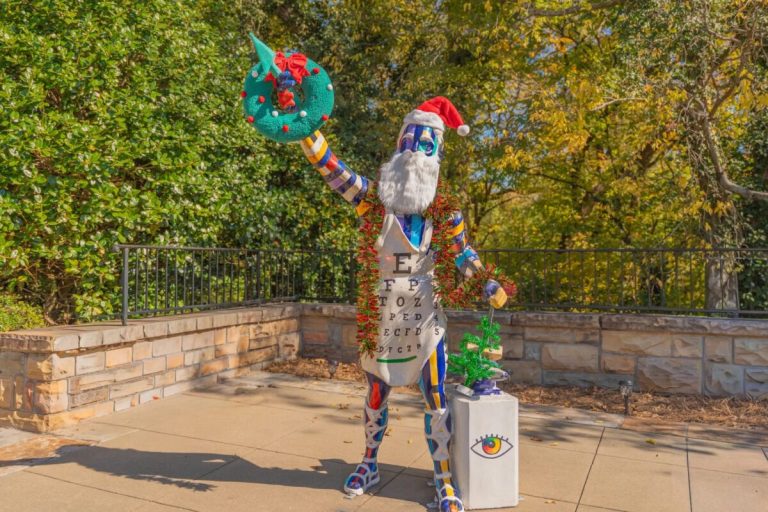Finding Birmingham’s lost springs. Where are they now?
Reading time: 7 minutes
Sponsored

“There is a lot of water under Birmingham – pockets of water and limestone,” states Jim Baggett, the archivist at the Birmingham Public Library.
In this, our second story in a three-part series exploring Birmingham’s lost lakes, parks and springs, we are going to focus on Birmingham’s springs.
Water, Water, Everywhere
Since the early days of the Magic City, water has been a hot topic in Birmingham. Builders would start construction, and lo and behold, they would find water close to the surface. Basements would flood or there were buildings not as tall as they were meant to be, because the ground was not steady enough underneath.
Marjorie White, director of the Birmingham Historical Society added, “There was significant water on the side of first and 20th, which is on the side of the Woodward building. There was a great spring at 2nd and 19th Street. It’s in all the early photographs, you see a spot where there was a well. Horses were watered there.”
Finding the springs of Avondale, Lakeview, George Ward Park (Green Springs) and Valley Creek
Avondale’s Spring Street

The center of Avondale’s business district is 41st Street. But did you know that before it was named 41st, it was called Spring Street; because of the springs that flowed from the park’s hillside?
Here is how the Birmingham Age-Herald described the spring in a 1920s article commemorating the 50th anniversary of the Avondale community.

Park. Courtesy of Birmingham Public Library
“Forty-first street is the old Huntsville Road (sic), much used by travelers in the days of the stagecoach. Here at the big spring they stopped, slaked their thirst and tarried to admire the beauties of valley and mountain spread out before them. Campers were frequent, and it is said they were loath to leave once they had tasted the pure sparkling waters of the spring and viewed the scenic beauty of the surrounding area.”
And the spring water flowing down 41st was much more than a slow trickle.
“Basically the springs accrue at the base of the ridges along Avondale Park,” said White. “There were two huge springs at Avondale Park flowing down Spring Street. There was an article in the 1880s that projected the volume of water was so great that Birmingham would have a route to the Gulf via the Black Warrior river. They thought the volume was that much.”
Today, thanks to the recent renovation of Avondale Park, the spring sees daylight along the hillsides for children to explore.

The spring’s tributary underneath Spring Street/41st Street is piped and buried underneath the street and buildings. However, ‘Spring Street’ does live on as the namesake of one of Avondale Brewing’s favorite beers.

Where is the spring that feeds Lakeview Lake?

As described in the previous article, Birmingham’s present Lakeview District once included Lakeview Lake, one of the five resort lakes in the area built before and after the turn of the 20th century.
Serviced by the trolley system, the street running alongside the lake and park, Highland Avenue, was at the time the largest and widest street in the South, according to Richard Dabney, author of the book, Birmingham’s Highland Park.
Currently, Lakeview Lake still exists as a water hazard for the Highland Park Golf Course.

“The current pond we see on the golf course is a remnant of the original lake,” said James Lowery, local resident and longtime environmentalist. “The pond is still fed by the spring that created the original lake.”
The spring head is covered by concrete and homesites, but the spring water still emerges from the ground and runs through the golf course to the pond.
The spring originates along the hillside near the Highland tennis courts.
Finding Green Springs

Everyone loves Green Springs Highway’s eclectic international restaurants and stores, but where can you find THE Green Springs? We do have an idea…
According to Marjorie White, Robert L. Green purchased an 800-acre homestead in the area in 1852. A little over 50 years later in 1906, about 100 acres of the original Green property was bought and was dedicated as a park, during the administration of Birmingham Mayor George Ward. That parkland, of course, was later named George Ward Park.
That property, the current park, contains several springs. In particular, there is a beautiful springhead near the St. George Melkite Greek Catholic Church entrance to George Ward Park. This is likely one of “Green’s” springs.
Spring-fed Valley Creek
In addition to the spring within George Ward Park, there is another spring on the edge of the park, just off Green Springs Avenue. That spring, which likely begins under a home and street, feeds a tributary that flows inside the park.
Here is a video of James Lowery showing where the underground spring emerges and enters George Ward Park.
Eventually, the two separate spring-fed tributaries flow out of George Ward Park, both under and above ground, until they join together and then enter the main channel of Valley Creek at 4th Terrace North and 7th Street.
They join the main channel of Valley Creek that begins somewhere underground in the vicinity of Crane Works near Highway 280.
All three springs contrast significantly. One visibly begins within the park and has children playing in it, while the exact origin of the other two is unknown–under a street, yard, and / or home, and, in the case of the one near Crane Works, an industrial area.
Why are springs important?
Remember the drought of 2016?

Birmingham and the state of Alabama experienced a record number of days without rain. Rivers and lakes, for the first time in memory, nearly dried up. During the drought, our springs were nature’s life preserver. They also provide the fresh water that keeps the rivers and streams healthy. In the past, the springs provided clean, fresh drinking water for people who lived near them.
“Since the water coming out of our local springs is typically clean, these springs are the proverbial canary in a coal mine…if spring creatures perish then something is really wrong with the groundwater and hydrology with possible contamination of the aquifer,” Daniel Drennen with the U.S Fish and Wildlife Service said.
Springs are all around us
Lowery enumerates how springs are all around Birmingham.
“There is a spring under the former K-Mart building in the Eastwood Mall Area. A spring on Altamont Road. There is also a spring run that is submerged under the Crestline Post Office and that then crosses underneath Montclair Road.”
The parks along Highland Avenue, formerly ravines, most likely had springs, especially Caldwell Park, according to Lowery.

In our third installment, we will examine how this network of lost and discovered springs link Birmingham and communities throughout Jefferson County. We will explore how local citizens have brought them back and why they are important for the future of our people, wildlife, parks, lakes and rivers.




